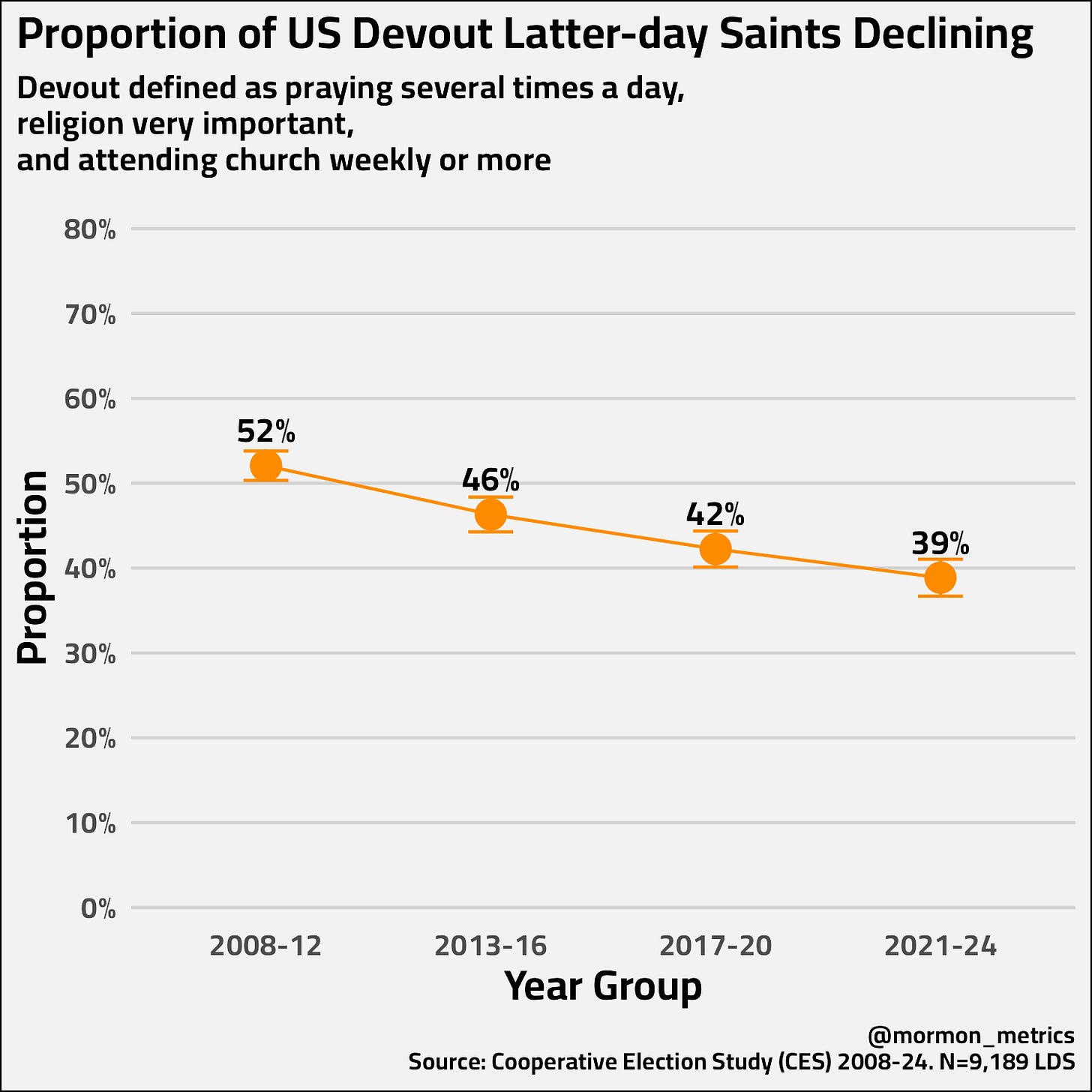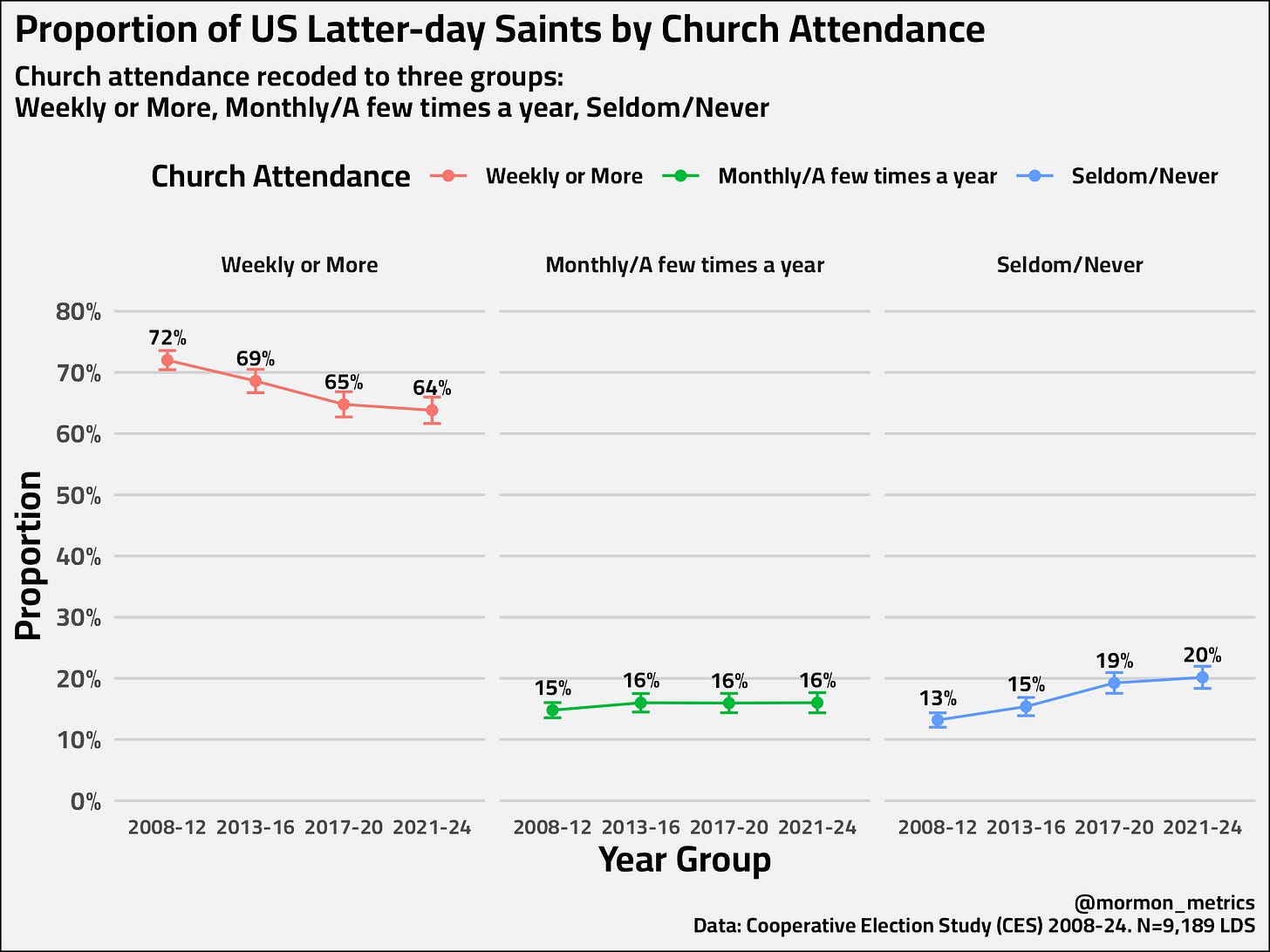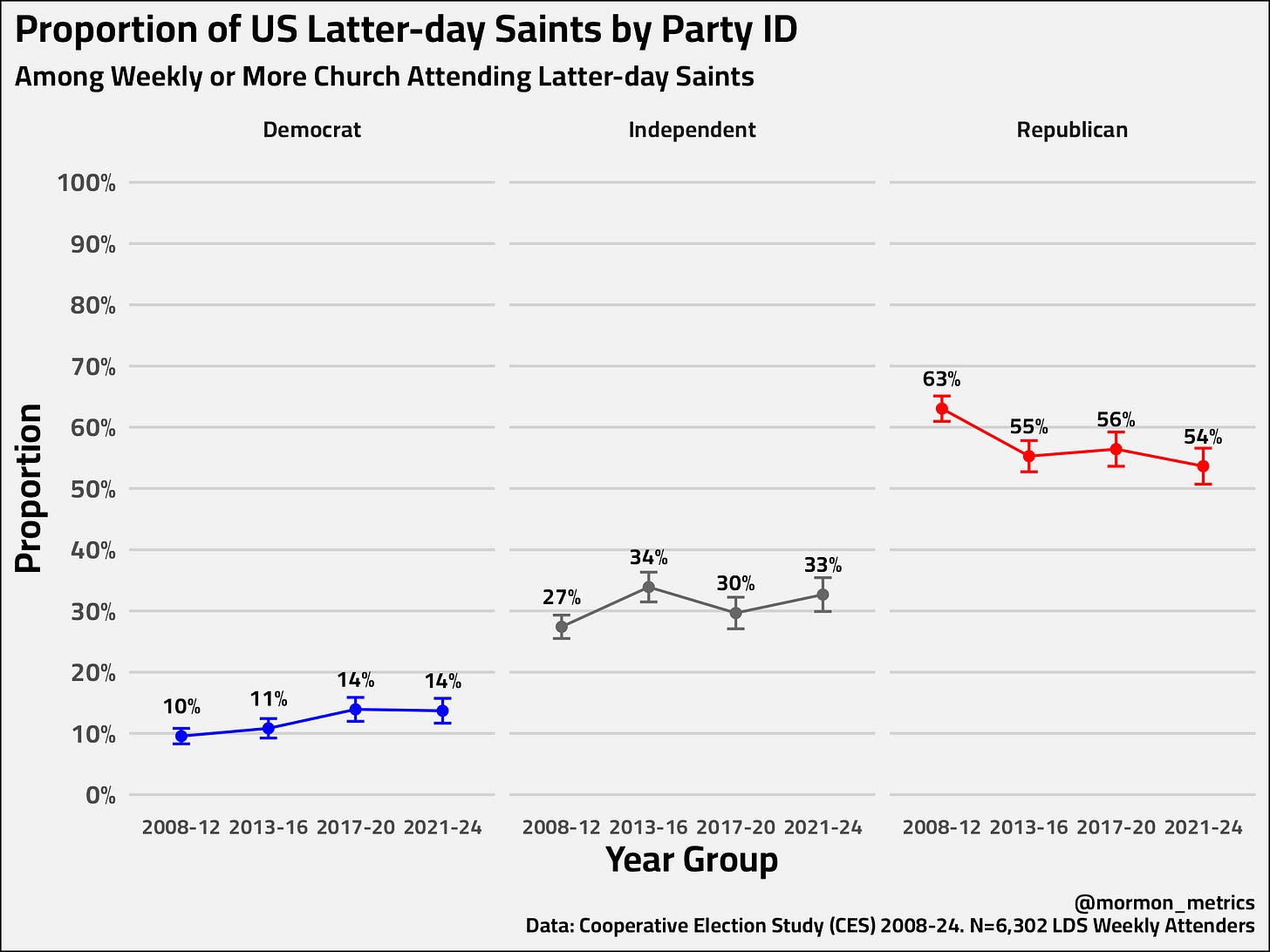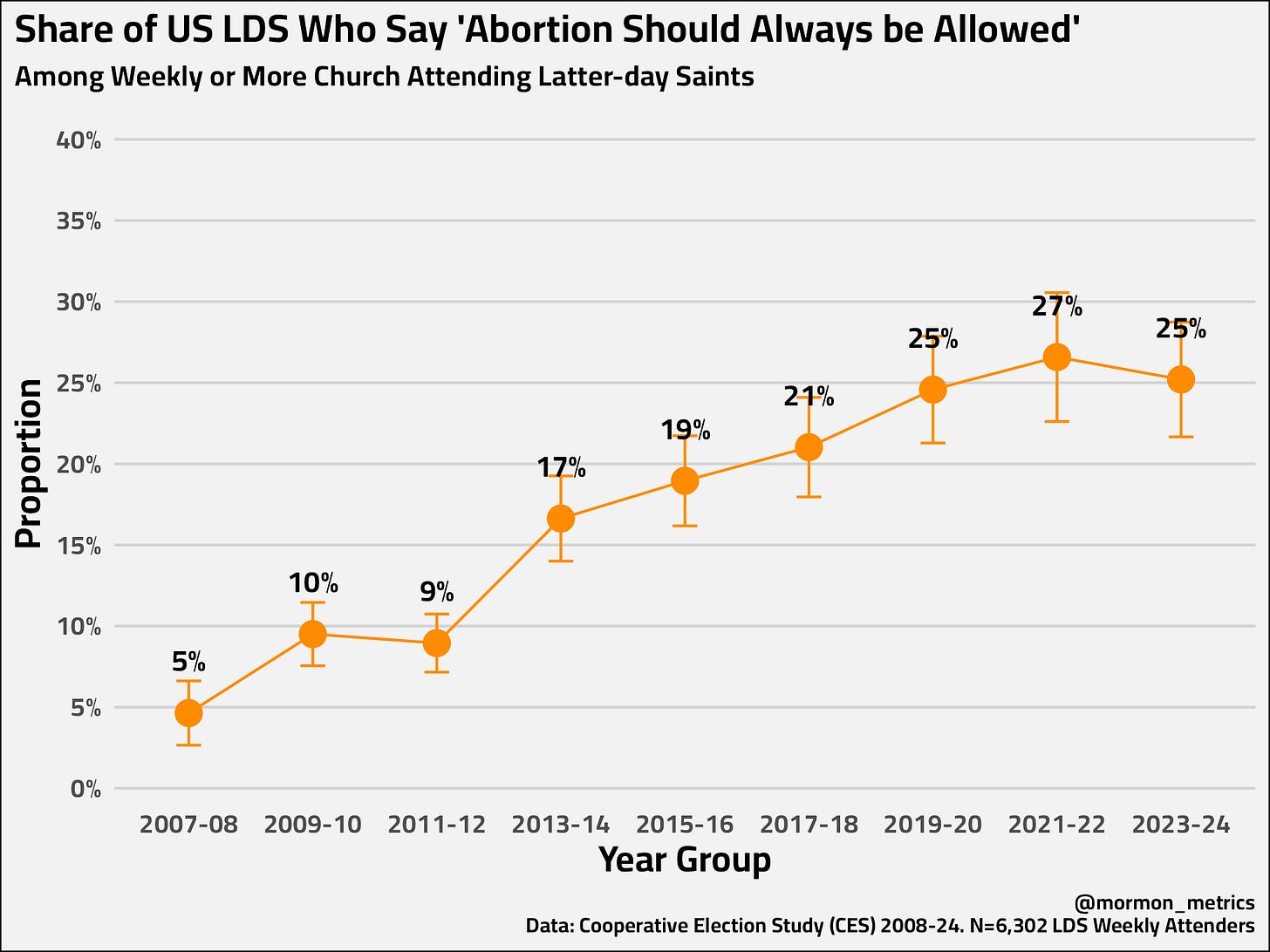Another Data Source Confirms Typology Findings
Can I Validate My Main Typology Findings From Other Data Sets?

After releasing my Mormon Typology 2025 report last week, I received thoughtful critiques — including a detailed response from Josh Coates. I appreciate the time he put into evaluating my work and his critique. It’s valuable to hear multiple perspectives (which is also why I’m sharing it here). Feedback like this is why I share my code/modeling decisions publicly which allows for more transparent and thorough evaluation. And in that spirit, I want to be clear about where I agree with Josh’s critique and where I see things differently.
Where we agree: I agree with Josh that some of my original narrative was too bold for an exploratory analysis. In response, I published an addendum clarifying that the typology is exploratory rather than definitive. A definitive taxonomy would require a much larger LDS-specific sample, which would mean significant investment of time and resources. I’ve also added sample-size notes under the charts and adjusted some of the narrative to emphasize this exploratory framing. You can view Version 2 in the last post or on my project page.
Where we differ: Josh suggests the findings are simply ‘noise.’ I think that overstates the case. With ~1,800 LDS respondents pooled (500–600 per wave), the clusters are meaningful even if not definitive. They highlight patterns that help us think more clearly about shifts in belief and practice.
To put it simply, silhouette scores are one diagnostic. In survey data where beliefs and practices overlap, they are often low. That doesn’t mean clusters are meaningless — it means boundaries are fuzzy. Human belief, identity, and practice often exist on a spectrum, making any line you draw fuzzy. The goal of exploratory clustering isn’t to carve sharp divisions, but to provide a framework that moves us beyond the simple “active vs. less active” divide. The real test is whether the groups are stable and show substantive differences that map onto real-world experience.
But here’s the important part: even if you set clustering aside, the broader trends persist. Let’s look at a different dataset with a much larger sample size…
Decline of Devout: CES style
So one of the key findings was looking at the decline of the Devout Traditionalists and the emergence of other identities.
While I can’t replicate the “Devout Traditionalist” group directly with the CES data, I can make a proxy. The Devout Traditionalists scored very high across practice and belief. The CES has three religious questions which are identical to the Pew data: Prayer Frequency, Religious Importance, and Church Attendance.
For the CES, I qualified someone as devout if they reported the highest level practice/commitment on each of these measures.
As you can see, there is clear statistically significant decline (our N is over 9k) in our proxy devout. Originally a majority at 52%, now at 39%. The horizontal bars above and below each point are confidence intervals. They are pretty small since our sample is large.
I also tested instead of having all 3/3 categories having only 2/3 categories or 1/3 categories with the highest reported level of religiosity. For each, they also showed statistically significant decline of a similar magnitude.
This is only from a few measures if we were able more fully replicate the pew data (richer belief qs, more practice qs, and other measures) perhaps we could see a decline that was more steep like we saw in the typology or maybe we wouldn't. Regardless, this is strong, high-powered confirmation of our finding.
Rise of Cultural: CES Style
In the typology, we see a rise of individuals (I call cultural Mormons) with very low practice - especially with church attendance.
I’ll point out a few things here…
We see a statistically significant decline in weekly church attenders.
“Monthly/a few times a year” church attenders have stayed consistent the last 20 years.
In the group who “never or seldom” attends we see a statistically significant increase.
This is a statistically significant rising group of people with very low practice yet still identify as Mormon supporting my finding of the rise of Cultural Mormons.
Rise of Adaptive: CES Style
The main idea with Adaptive Believers is that there is a growing group of practicing saints that is more flexible on social and political views.
So for these next two charts, I only filtered to LDS weekly church attenders.
Among active LDS, there is a statistically significant decline of Republicans with a rise in Democrat and Independent identifying LDS. In my typology, Adaptives still were more likely to identify as Republican, but here we can see some shifting to becoming less Republican among active members.
I would have loved to show a gay marriage acceptance over time chart among active members, but the CES only had data on it til 20161 which is only half of our time period of interest. I’m guessing we would have seen significant movement there from start(2008) to end(2024), but cannot validate for certain. Instead I was able to find an abortion questions lasting the entire CES period.
This chart specifically shows active members that say “Abortion should always be allowed.” We see a clear statistically significant increase in this metric among active members. The question started being asked a bit differently in 20142, but there is still a statistically significant increase from 2015-16 to 2023-24 with the exact same question wording and responses. I think it's interesting that 1 in 4 active members in 2024 think abortion should be allowed in any circumstance.
I would have loved to show more political questions, but the CES seems to ask different political issue questions every wave and it is quite tedious to go through 20ish questionnaires often with different question names and harmonization issues and join them in from the 20ish individual datasets.
Anyways, thanks for reading this week. Next week, I plan to dive into a more stories with the typology. See you then!
My code for this post is available here.
Here is a link to the google doc tracking gay marriage and abortion in the CES
The difference was this from 2008-2014 they asked…
Which one of the opinions on this page best agrees with your view on abortion?
By law, abortion should never be permitted
The law should permit abortion only in case of rape, incest or when the woman's life is in danger
The law should permit abortion for reasons other than rape, incest, or danger to the woman's life, but only after the need for the abortion has been clearly established.
By law, a woman should always be able to obtain an abortion as a matter of personal choice.
The respondent can only select 1 of the 4.
In 2015-2024 they asked…
Do you support or oppose each of the following proposals? Always allow a woman to obtain an abortion as a matter of choice.
Support
Oppose
Apparently, active Mormons are less likely to choose answer 4 in the first question wording and relatively more likely to choose answer 1 in the second wording.






Great breakdown, thanks for the clarification. I love this data.